 Save your dying Cactus Save your dying Cactus  
Cacti are remarkably durable and low in maintenance. The succulents need little more than sun, well drained soil and rare moisture. The pests and problems common to the plant group are minimal and usually easy to surmount. Cactus problems may range from sucking pests, like whitefly, to common rots from bacteria or fungal disease. One of the telltale signs of a problem is a soft, mushy cactus. 
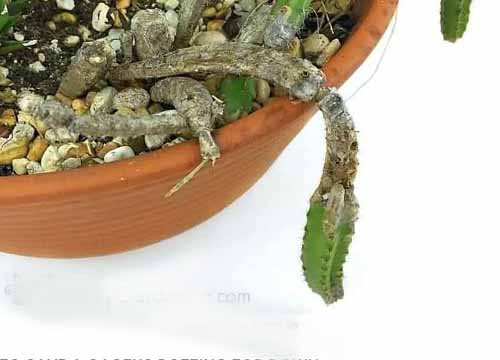
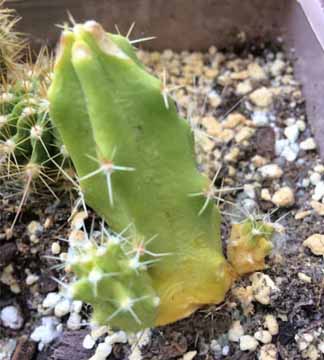
Why is My Cactus Going Soft? The arid gardener may ask. Likely causes are disease, cultivation and improper site and ambient conditions. Cacti generally have low moisture needs. They thrive in temperatures above 70 to 75 F. (21-24 C.) in sunny locations and require little supplemental nutrients. Potted plants need good drainage holes and a soil mix with plenty of grit. In-ground plants have similar requirements. As with any plant, cacti can become diseased or damaged. A common problem is soft spots in the flesh of the plant. These may be discolored or corky around the spot and the center is mushy and wet. 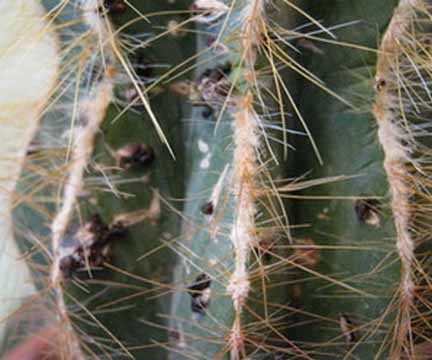
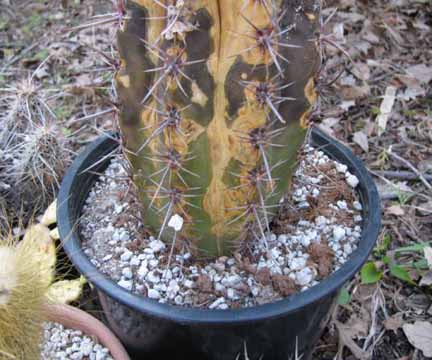 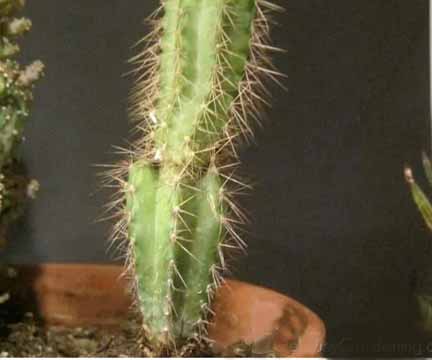
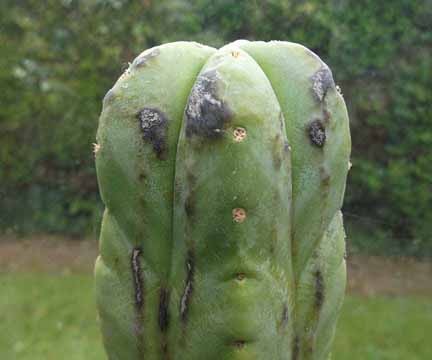 The reasons for such spots may be disease or simply mechanical injury to the pads and stems of the cacti. Cactus rot issues must be dealt with quickly to prevent spread to the rest of the plant and serious loss of vigor, which may become permanent. Cactus Problems with Fungal and Bacterial Diseases Bacteria and fungus are introduced to the plant from openings in the flesh. The open areas may be from insect or animal activity, damage from inanimate objects or heavy weather, such as hail. The action of injury isn't important, but the damage from fungal spores or bacteria is crucial. Warm, moist conditions accelerate the production of fungi spores and increase bacterial production. Once the organism takes hold in your plant, you will see soft mushy cactus. 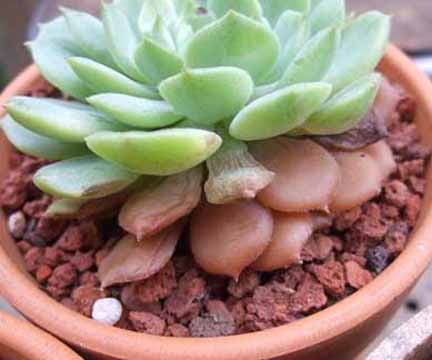
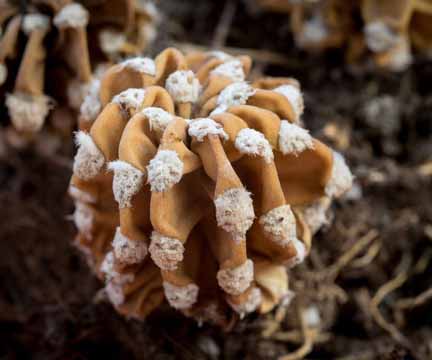
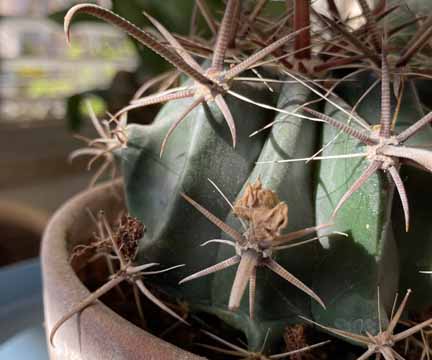 Symptoms to watch for include small sunken spots, discolored scabs, round soft areas surrounded by fruiting bodies, and black or other colored dots on the surface of the cacti skin. You may even notice some oozing of your cactus plants. Treating Cactus Rot Issues Cactus problems that have gotten into the root usually result in a slowly dying plant, while topical issues in the upper body can be treated easily. How to save your dying Cacus Fix root rot in CactusDiscoloration, shakiness, and mushy roots are often signs of cactus root rot. Other symptoms may include your cactus turning brown or black.And here's why root rots are common in cacti plants: Cacti have a wide, shallow root system to maximize water collection in their natural habitat. In the constricted space of a pot, over-watering, compacted roots or poor drainage will quickly lead to root rot. Sometimes just the base of the cactus, and not the roots, is affected by water that does not drain quickly enough and is standing around the base of the plant. These are among the most common problems with growing cacti in the home. Once you're convinced that your plant is suffering from root rot, take the following actions as a matter of urgency. You should remove your plant from its pot and check to see the condition of the roots. If some are still white, cut away the darkened, mushy roots and any rotted areas at the base of the cactus with a sterile knife. Allow the plant to dry and heal out of the soil before re-potting in a clean container with fresh cactus potting medium. You should always wear protective hand gloves or use a folded length of newspaper to avoid being pierced by the cactus’ spines. 2. Watch Your WateringOptimum watering is one of the most effective ways to save a dying cactus. Too much water is especially detrimental just as lack of water is. But when it comes to cactus, it’s better to err on the lower side. Under watering your cactus - If you rarely water your cactus, it puckers or shrivels, but can also discolor (usually getting brown and dry, or calloused). If your succulents and cacti are showing these symptoms, it's a way of telling you that they're thirsty and dehydrated. To remedy the situation, give them a nice thorough watering. Over-watering your cactus When over-watering is a chronic problem, help the cactus to shed as much water as quickly as possible. To do that, Select an unglazed clay pot only slightly bigger than the cactus and fill it with a commercial cactus mix. Pot the cactus in the mix gently, so you don't upset its delicate roots. The clay pot will wick away more water from the root zone while the loose cactus mix allows water to drain quickly and completely. You should only plant very large landscape cacti directly in the ground because landscape plantings give you less control over drainage. Change the potting soilAs already seen, over-watering is the root cause of cacti root rot. Water doesn't directly cause the rot, but rather a member of the water mold called Phytophthora spp. But the rot cannot take hold unless there is adequate moisture - which you gladly provide when over-watering. Now what does all this have to do with changing the potting soil? First reason is that the pathogen that initially caused the rot is probably still present in the current soil. And the second reason, probably the most important is; some potting mixes are known to be heavy and probably hold too much water. Thererore you need to change to a lighter, porous potting soil. Repot your cactusA common reason for repotting is to give the cactus plant a larger growing space. Houseplants eventually outgrow their containers, causing the roots to become crowded and compacted. Without enough space for the roots, the plant often experiences stunted growth and may die. Signs that the plant has outgrown the container include roots growing through drainage holes or above the soil level, water that runs right through the container, unhealthy-looking leaves and visibly crowded roots. Moving the plant to the next size larger container allows the roots to spread while enabling the plant to grow larger. Make sure to thoroughly disinfect the new pot with one part bleach and one part water – to kill any unwanted guests. Choose your pot wiselyWhile potting up is a good thing, you should take care not to choose a pot that will actually cause problems. If the pot is too big and it has too much soil it will hold too much water and this can eventually cause the roots to rot. Induce RootingWhen roots or tissues are extensively damaged from overwatering or other unhealthy cultural practices, you need to induce some new root growths. To do so use a sharp, clean knife to cut away all the rot from the cactus. Even a small portion of healthy tissue can regenerate a whole cactus plant, but if you leave the rot behind, it may continue to spread. Allow the cactus to dry on the counter for several days until a thick scab forms on the cut sections. Place the remaining cactus section into a clay pot with cactus soil and bury it about 1 inch deep unless there isn't much of the cactus left - in that case, bury it about halfway. Don't water the cactus for the first week, and only water sparingly after that until new growth appears. Let your cacti restSometimes, your cactus might not need saving and that you're just being paranoid. When some parts die off or they shed their buds, they might actually be asking for a rest and nothing more. If the cacti shed its buds one winter, don't worry: it should bloom the following year. As long as the vital areas like roots are looking healthy, there shouldn’t be anything to worry about. Provide optimum temperatureIf your cactus is not blooming, it may be due to the amount of daylight they're getting or the temperature. To trigger blooming, nights need to be at least 14 hours long and days between 8 to 10 hours for six weeks. If you have strong indoor lighting at night, you may need to cover your cacti. Flowers will only form when the temperature is between a cool 50 to 55 degrees F. The reason why flowering is important is that it signifies a healthy plant. Watch out for mealybugsMealybugs suck sap from your cactus plant, reducing its vigor, and they excrete sticky honeydew and wax, which reduces plant quality. Cacti are especially vulnerable because year-round mild temperatures favor mealybug populations, and indoor plants are usually not exposed to the natural enemies that often keep mealybugs under control outdoors. Regular monitoring and observation of your plants is key to ensuring you spot and control them in good time. Feed them wellMost of the problems plants face including a dying cactus can be attributed to poor nutrition.From spring through early fall, feed every 2 weeks with a complete cactus fertilizer. During the fall and winter, feed the cactus monthly. Avoid over-fertilizingCarefully follow the instructions on a fertilizer package, and when in doubt use less than recommended. Make sure the fertilizer you use is marked as good for houseplants. Light is more important for the cactus than you thinkPlants that need more light become lanky, floppy, pale or shed leaves, and can eventually die. If it's growing but the new growth is pale and flimsy, it's probably not getting enough light. If a plant looks like it needs more light, move it to a windowsill. Protect your cactus from prolonged exposure to direct sunlightHave you heard of cactus corking? This is appearance of a firm, brown, bark-like tissue just above the soil of an otherwise healthy plant. It's actually part of the natural aging process of cacti. Corking always starts from the base of the cactus and moves upward. However, if a cactus turns brown from the top down, it's a sign of sunburn or some other problem. Mild sunburn problems appear as a whitish discoloring, usually at the top and side facing the sun. Severe burns show up as hard brown scars on the burned surface. Cacti with brown scars have permanent damage. If your cactus only has whitish discoloring, you can revive the cactus by moving it into the shade. Cacti that aren't used to being in the sun have to be acclimated to it by providing full sun for a short time each day and then increasing exposure over a period of several weeks. Some species should never have full sun all day. Most cacti respond well to excising the diseased tissue. Use a sharp sterile knife to dig out the damaged flesh and allow the hole to dry out. Don't water overhead as the wound closes. If the damage has infected the roots, there is very little you can do. You can try to repot the plant, removing diseased soil and replacing it with sterile soil. You should wash the roots off well before replanting in fresh potting medium. In certain varities a soft, mushy cactus can also be saved by taking cuttings and letting them root for a fresh new plant. Allow the cutting to callus over for a few days before you insert it into sand. Rooting the cutting may take several weeks. This method of propagation will produce a healthy cactus that is the same as the parent plant. |